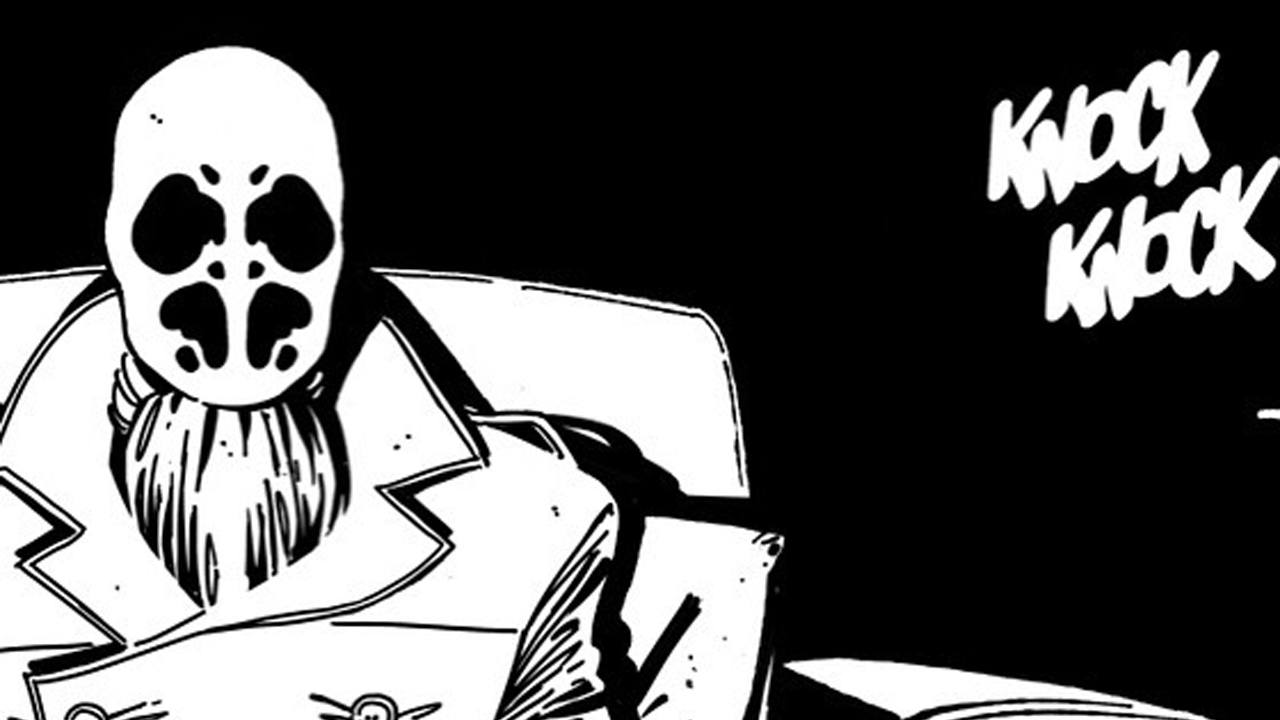
In the seminal comic book series Watchmen, the superhero known as Rorschach warned of corruption and discontent - and in the new 12-issue series Rorschach from writer Tom King and artist Jorge Fornes, that time that the anti-hero warned us about is now.
Set 35 years after the original Watchmen comic book (and acknowledging the events of the recent HBO series), Rorschach explores the world Moore and Gibbons created by exploring the real world we live in, through the lens of comic books and superheroes.
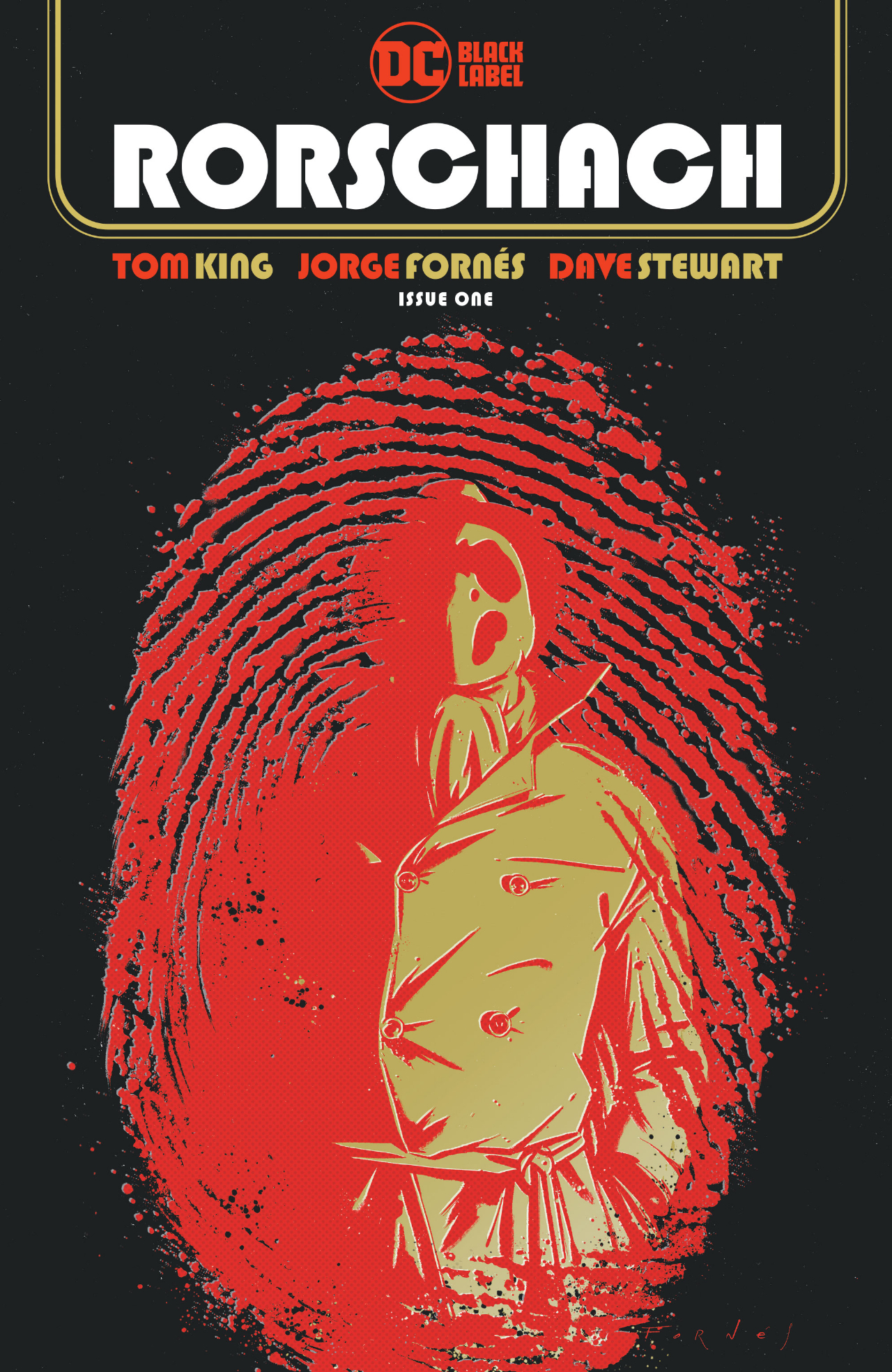
"I'm trying to do and talk about what's going on now," King tells Newsarama. "Artists have to evolve and have to look around and see the anger and pain we're all feeling with the pandemic and our government constantly lying to us. I love writing about superheroes, but sometimes you have to write the opposite of that and write about what's happening to us."
Rorshach follows a new man stepping into the mantle Walter Kovacs created - Will Myerson. The 12-issue series shows a world full of government distrust and paranoia and flashes back to points of Myerson's own life and how he became the Rorshach of this generation.
King spoke to Newsarama from his home in Washington, D.C. about the upcoming series, working with Fornes and colorist Dave Stewart, and how he feels this is not only his best work ever - but also the most timely.
Newsarama: Tom, let's set the stage. There's been Watchmen, prequels to Watchmen, a movie adaptation of Watchmen, and a TV sequel to Watchmen, and then it being integrated into the DCU. What timeline will Rorschach be following?

Tom King: It follows the TV show. It doesn't interact with the TV show, but acts as if the show happened in the universe.
Get the best comic news, insights, opinions, analysis and more!
Nrama: Obviously we start off with somebody else taking the Rorschach mantle: Will Myerson. Can you talk about his political ideology and how it differs from Walter Kovacs? You've mentioned a little bit about Hanna Arendt and Ayn Rand and them being polar opposites, so how does that play into here?
King: Yeah, that's a huge part of it.
One character is a Steve Dikto-esque figure. Everyone knows Rorschach himself was a parody or examination of Steve Ditko's extreme Ayn Randian point of view. Then you see how the philosophy works through Rorschach and Mr. A and all of these other creations, and you can see how Ditko dedicated the last 30 years of his life to more and more esoteric Ayn Randian works. So our character Will is based on Ditko just on a visual level, but he has a different north star and that would be Hanna Arendt.
She had a very similar path to Rand: immigrant to the US, philosopher, but from the left. A completely different ideology and her philosophy was about how totalitarian authorities form and how we can avoid that. In our current moment where I feel that for the first time in my lifetime the threat of totalitarianism is sort of at my doorstep is sort of what Moore was feeling in 1986. So it's a good time to talk about Arendt and her theories and how it impacts.

Nrama: Much like the original Watchmen limited series, Rorschach starts out as a murder mystery and it's interesting because Sheriff of Babylon had a similar concept and start, and Mister Miracle was you sort of falling in the shadow of both Jack Kirby and Alan Moore, but Rorschach is different. It feels different anyway.
Don't get it twisted, I'm not saying you're trying to write like Alan Moore or anything here, but where is Tom King in this?
King: That's a good question. To me, this is the best thing I ever wrote. I was finishing the first issue and felt this was great. I'm trying my best to evolve. I've been using the Beatles as a metaphor and I don't want to make the same album I did in '64 than the one in '66, you know? I purposely took a year to study film noir and read all these things about it.
In this series, I purposely threw out - not crutches - but things I had been using effectively. Things like repetition, page transitions, and the sort of stuff that's almost like the backbone about how I write, I wanted to throw those out and to write in a different way. Not in a mature way, but in a more experimental way and get out of my comfort zone. I don't know, if you don't do that as a writer, I feel like you just sort of die.
Nrama: Yeah, exactly. Springboarding from evolving, you've mentioned how you didn't want this to be a Watchmen cover song, but that's sort of hard to do, for the most part, right? Riding along on that metaphor, would it be better to say you're like Eric Carr taking over for Peter Criss in a way?

King: [Laughs] I just very much did not want to do Alan Moore - look, nobody has stolen more of Alan Moore's techniques than me over the years.
I had this joke during Omega Men that it should have been called 'Who Omegas The Omega Men.' I've done the four-panel grids, I've done the page transitions, I've done the superheroes and turning them dark, and for this project, I didn't want to steal from him as much. I wanted his ambition but didn't want to use the language he wrote in.
So we don't do nine-panel grids, we took out the quotations at the end, we even took out chapter titles. Watchmen has very famous chapter titles but here it's just Chapter One, Chapter Two. So all that stuff that I've been trying to do here was to move away from the technique but keep the language.
Nrama: I almost love the fact that you wanted to forgo the nine-panel grid but there's a 16-panel page at the end of the first issue. Was that your idea?
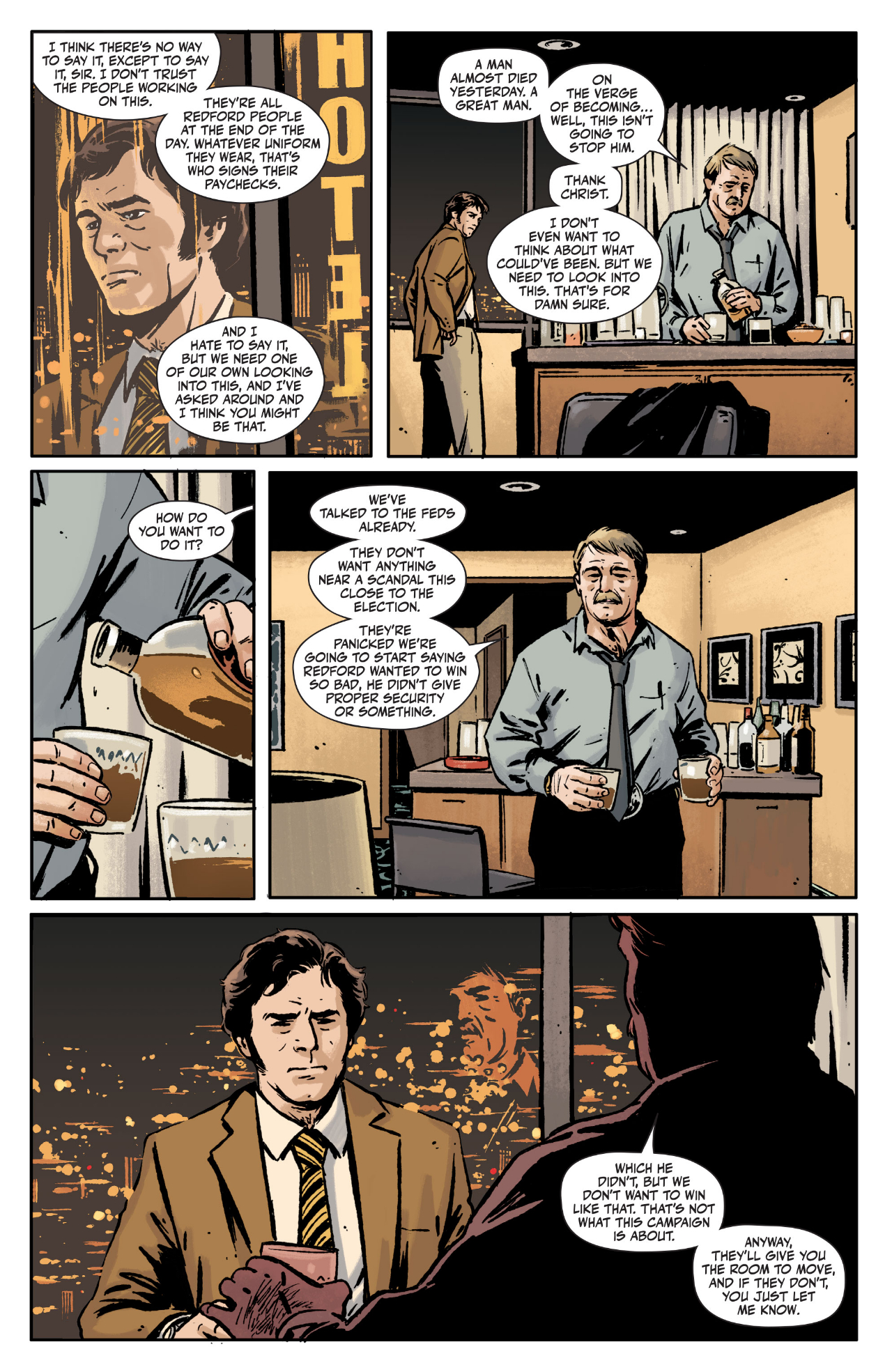
King: Now, I never said I wouldn't use it, just use it more effectively and when it needed it and was appropriate. You know it would be stupid of me to get to a page and I needed a nine-panel grid and couldn't do it. [Laughs]
It's more of a shoutout. Like, yeah, I didn't want to be a cover song but doesn't mean I can't sample. [laughs]
But that 16-panel grid was Jorge's idea, which I loved, and as you know that was most famous in Dark Knight Returns. So.
Jorge Fornes is drawing it and I'm working with a genius. The whole process is very easy.
Nrama: I was just about to go into how you're collaborating with Jorge Fornes and Dave Stewart on Rorschach.
If anybody has ever read your scripts, especially with Mitch Gerads, you've developed this shorthand. Was your process for Rorschach a bit more detailed with working with Jorge or were you more laid-back with the direction even given your limited work experiences together?
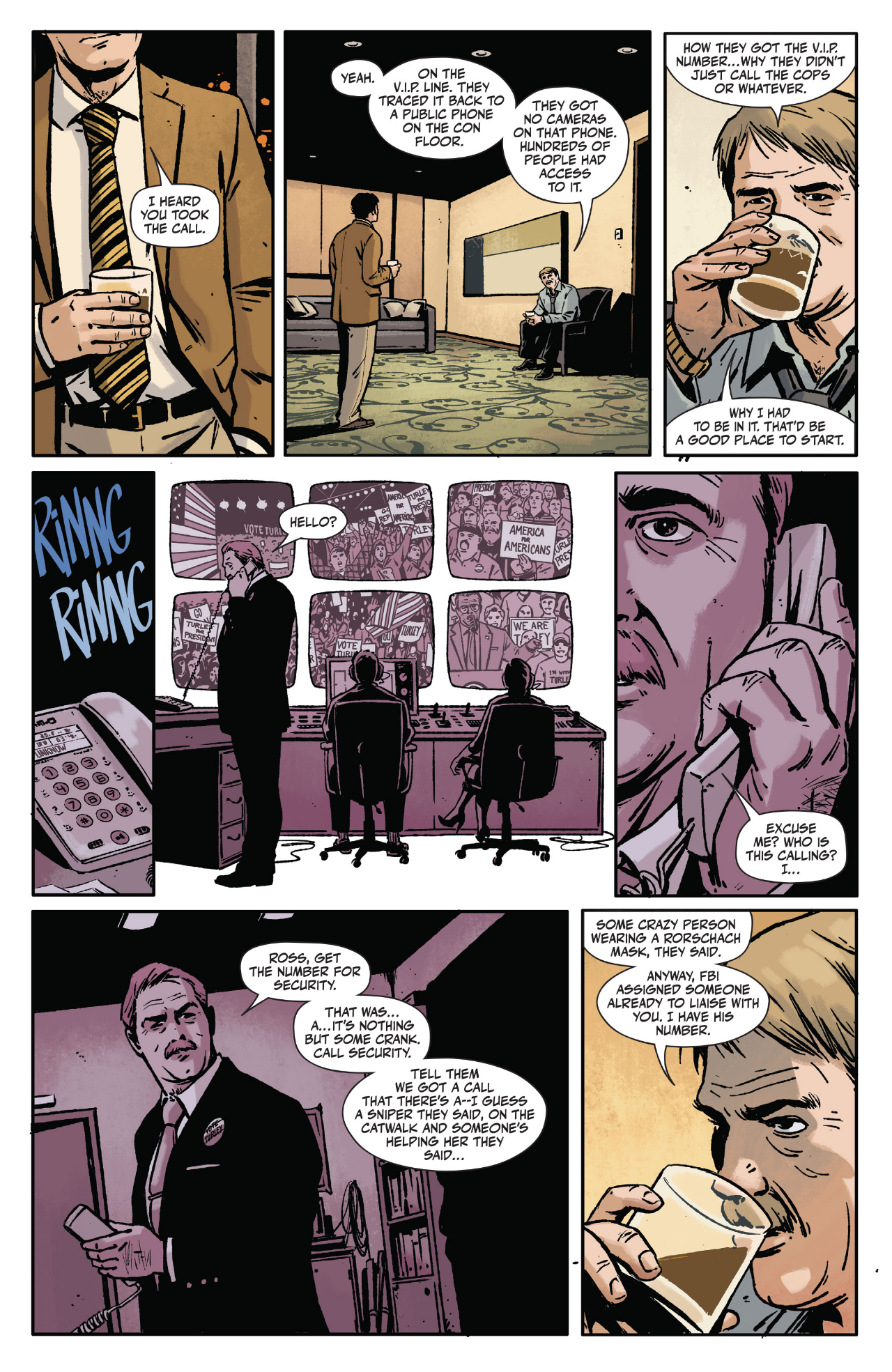
King: I mean, Jorge and I have done, like what, seven issues together? We were just coming off of a very complicated Batman annual together and is probably the best Batman book I wrote the entire time I was on that series. So we've worked together enough that he was comfortable with my style.
For those that haven't seen my scripts, it's somewhere between a very open Marvel style and more of an Alan Moore where I break down the pages by panels and it gives a better description of what the book will look like. Each panel is a light description and I think Jorge is one of those guys that I don't have to tell him a lot, he knows what he's doing. And Dave Stewart is the best colorist in comics.
The whole point of comics is collaboration and as much of a control freak I am, the best way to achieve success is to just let really good people do really good work.
Nrama: During DC Fandome over the summer you talked about how you initially turned this Watchmen sequel. What was the big lure to finally have you on board with this?
King: It was two separate things that sort of collided with each other. One was the TV show.
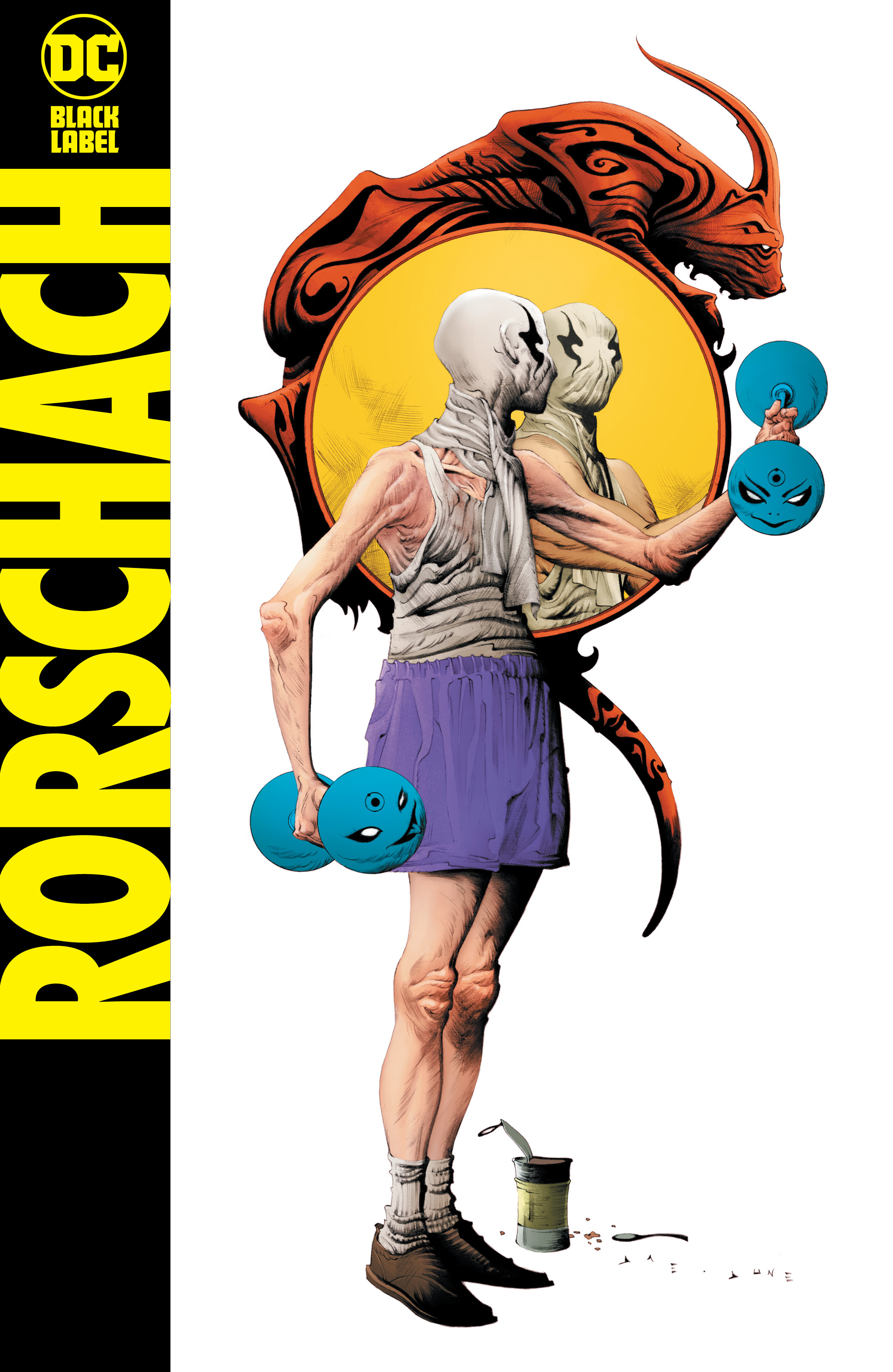
I had no desire to do this. I didn't want to be compared to Alan Moore, I'll lose that comparison. I don't want to play baseball with Ted Williams, it just wouldn't be fun. Then the Watchmen TV show came and I saw that there was a way to do Watchmen as a language to talk about really deep, current issues.
The show was talking about racial issues, the original Watchmen comics were talking about Soviet-American wars and superheroes, and we're in such a f--- up moment right now, I wanted to talk about that. That language is a way to symbolize that. It could be done that way and you could do it well.
The other thing was... like I said Jorge and I did this Batman annual together and I got the pages back and I realized I was working with one of the greats right now. So I would do anything to work with him again. I knew DC really wanted me to do this Rorschach thing and if I told them, I only wanted Jorge on the project, I could bring him in on it. It was the combination of those two factors.
Nrama: I wanted to talk about these covers too, the main covers anyway. What were you wanting out of the design?
King: Jorge would be the guy to talk about that as he's the lead designer. The alternate covers coming out are cool, we're doing an X-Men #1 cover because when you work for Jim Lee, you have to do Jim Lee stuff. When you have all of them though, they add up to an image on the back. You'll see what it is. It sort of forms a puzzle.
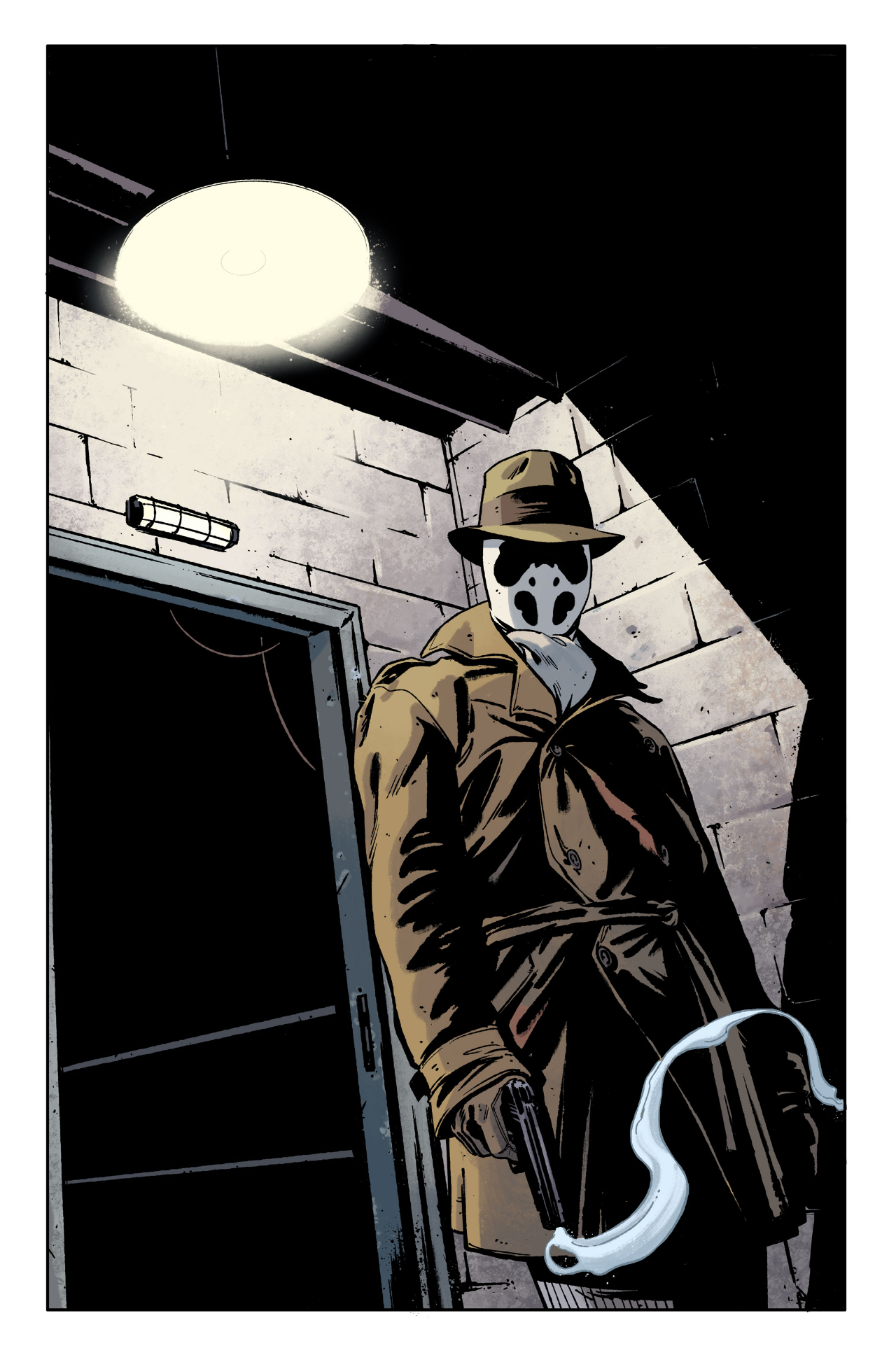
To me, this book takes a lot from the paranoia from the '70s and so that was the kind of vibe we wanted for it. We sort of don't know where the floor is and we're sort of at that moment again in our country and wanted to hearken back to that.
Nrama: Also during DC Fandome, we saw there was at least a moment with the original Minutemen team, how much of the series will be a flashback?
King: The whole series is sort of told like Citizen Kane or The Killers, if you've ever seen those, where it runs backwards. It's a flashback that's a person-to-person reconstruction of the story.
Nrama: I think I've seen Citizen Kane, Tom [laughs].
King: Yeah, good! [Laughs] So yeah it's basically told in specific flashbacks.
At the start, we see that somebody in a Rorschach costume and somebody in a cowgirl costume tried to kill the opponent running against Robert Redford. The whole thing is watching this detective try to figure out why they were wearing these costumes, why they were trying to kill him, and what led them to that moment.
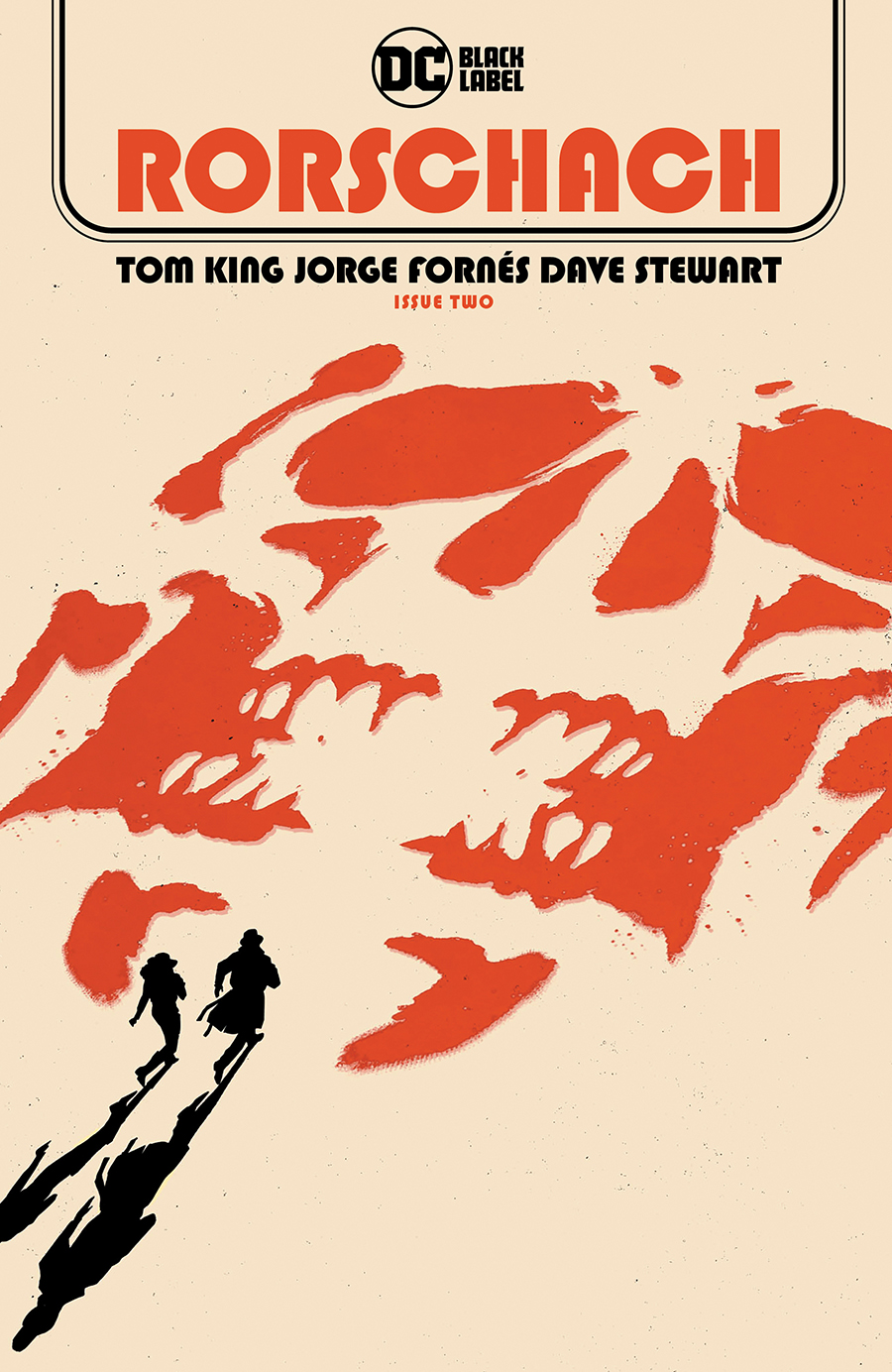
That's the mystery that drives the book. You have a detective going around asking about the would-be assassins and putting this whole scenario together.
Nrama: Oh so you definitely weren't kidding about sampling.
King: [Laughs] Like I said, it's the same language.
Nrama: You keep saying that, but what are you referring to?
King: It's hard to explain. We're dealing with things that go beyond words. So, I wrote 'The Button,' right? The first chapter of 'The Button.'
Nrama: Right.
King: And we did it on a nine-panel grid and it was Batman versus the Flash, it was a lot of punching, it was great, but it wasn't Watchmen. It had the smiley face, it had the layout, but it was more of a superhero story, but didn't have the stakes of Watchmen. That's what I mean by the language. It's the idea that we're not talking anymore about the DC Comics sort of world and at the end of the day hope and dreams save everything, it's about looking in the mirror and seeing who we are.
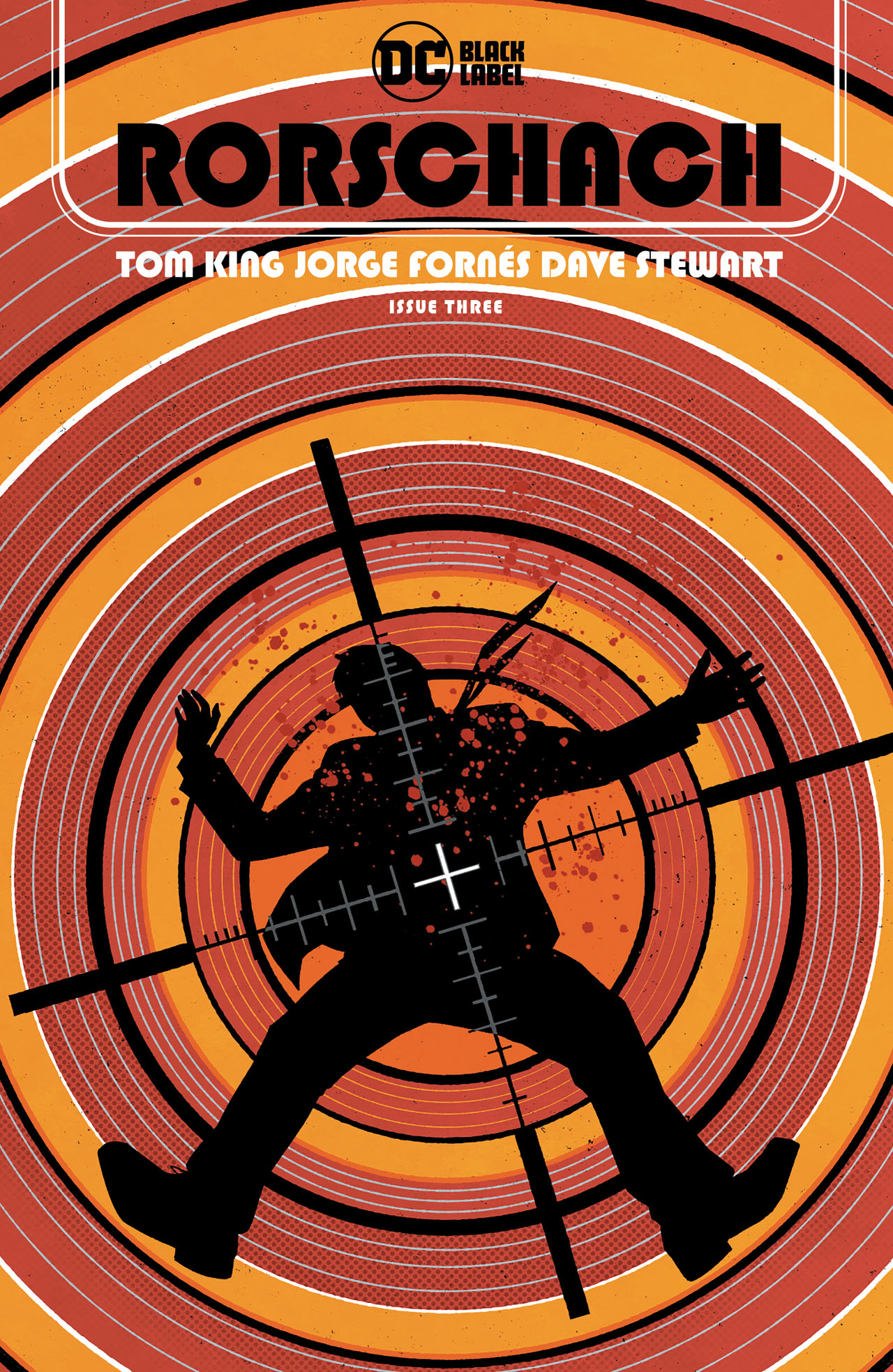
Nrama: We've seen that you've set this issue almost in actual real-time, taking place in 2020 and during an election. But how much of the series about today?
King: All of it.
Yeah, this generation of books I'm writing: this, Batman/Catwoman, Strange Adventures, are very much of today.
When I look back and look at the trilogy of 1986, which is Maus, Watchmen, and Dark Knight Returns, they are very much about the world of 1986, but they're timeless classics.
I'm trying to do and talk about what's going on now. Artists have to evolve and have to look around and see the anger and pain we're all feeling with the pandemic and our government constantly lying to us. I love writing about superheroes, but sometimes you have to write the opposite of that and write about what's happening to us.
Lan Pitts likes watching, talking, and writing comics about wrestling. He has mapped every great taco spot in the DC and Baltimore areas. He lives with his partner and their menagerie of pets who are utterly perfect in every way.


